How Are Diamonds Made? Natural vs Lab-Created Explained
Two Paths, One Diamond Not all diamonds come from the same place — but they all start the same way. Pure carbon, crystalized under immense pressure and heat. Whether it…
What are these photos? Where are they taken? Why are they different colors? How do I interpret them?
Read on for the answers. Once you understand the basics, you’ll find they are simple, yet extremely useful.

PriceScope Pointer: More than 60% of diamonds receive the “Excellent” cut grade, despite having visible quality differences. These images allow you to differentiate between them.
Before going on: Check out the PriceScope Diamond Buying Guide
These pages may reference products from companies that help to support PriceScope.
For diamonds that deliver exceptional light performance and come with a comprehensive selection of light performance images and HD videos, we highly recommend A CUT ABOVE® from Whiteflash. Additionally, you may want to explore Astor by Blue Nile and True Hearts by James Allen for other top-tier options.
Light Return and Light Leakage Explained
Diamond light performance is a hot topic, especially with the rise of e-commerce sales. Fortunately, diamond imaging to demonstrate a stone’s light performance is possible.
Light entering a diamond will do one of two things. It will either reflect and return to the viewer’s eyes as positive beauty components like brightness, dispersion, and sparkle, or it will leak through the diamond’s pavilion (also known as windowing), creating dull or dark areas. Light return is good. Light leakage is bad.
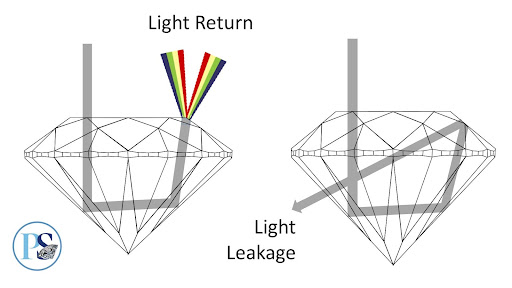
Light leakage can be defeated by overwhelming the diamond with light. Most jewelry stores use bright overhead spotlights to do that, so you won’t see leakage at the sales counter.
PriceScope Pointer: When examining diamonds in stores ask to compare them in several different lighting conditions, including a dimly lit or shaded area, so you can analyze how appearance holds up, place to place.
The Beauty of Structured Light Environments (SLEs)
To analyze diamond light performance, a translucent or reflective hemisphere can be used to color-code light entering a diamond from different angles. Research gemologists and optical scientists have used SLEs since the 1970s to analyze different aspects of light behavior, including overall light performance (light return versus light leakage) and precision of craftsmanship (reflective optical symmetry).
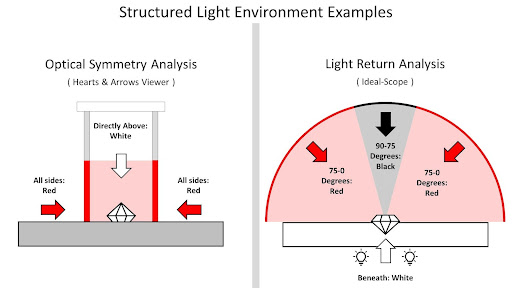
Performance SLEs vs Precision SLEs
Some SLEs are designed to interpret performance-only. Some SLEs are designed to interpret precision-only. It is extremely important to know what a particular SLE is designed to show.
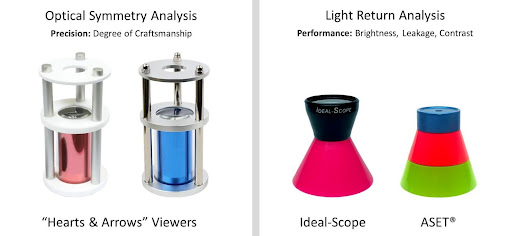
Why Light Return Analysis is Important
Most cut grading systems do not differentiate at a high level, making further diamond light performance analysis necessary for those who want a diamond with little or no light leakage. Undeniably, the most important light performance component is light return. The light which returns to the viewer will be seen as brightness, dispersed light (fire) and scintillation events (sparkle).
The SLEs below, are the simplest, most repeatable, and unbiased ways to analyze light behavior within a diamond. The only scientifically peer-reviewed system for grading diamond light performance was established using the ASET SLE.
Ideal-Scope
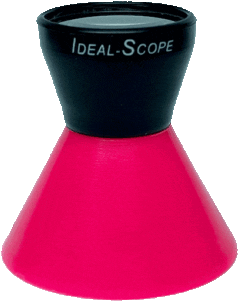
Ideal-Scope Diamond Imaging Examples
Note: In diamonds with the highest light return, small, symmetrical white triangles at girdle and facet meet points are normal.
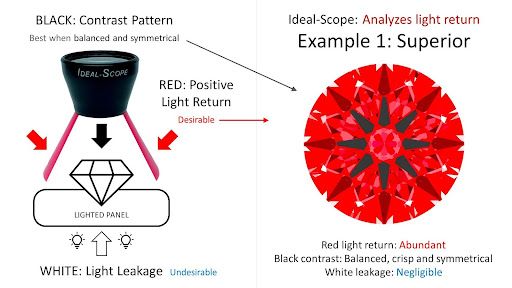
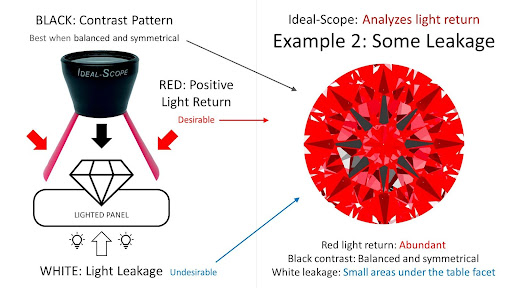
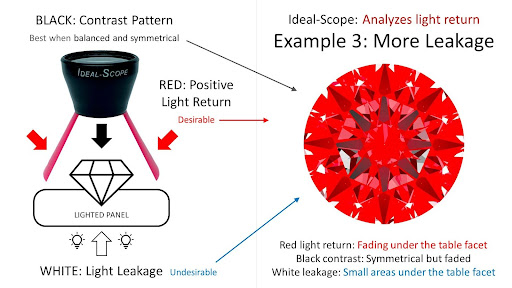
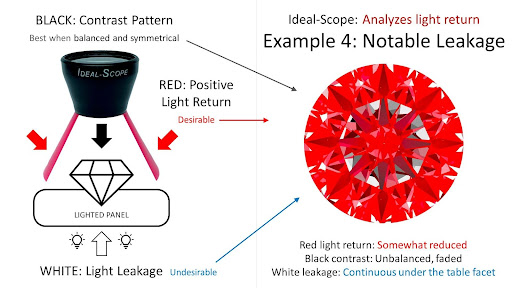

ASET® Diamond Imaging Examples
Note: In diamonds with the highest light return, small, symmetrical black triangles at girdle and facet meet points are normal.
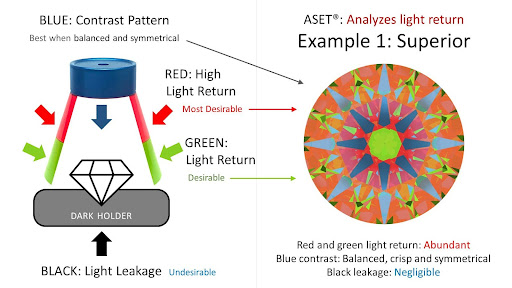
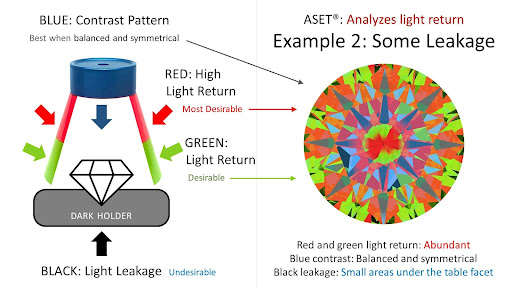
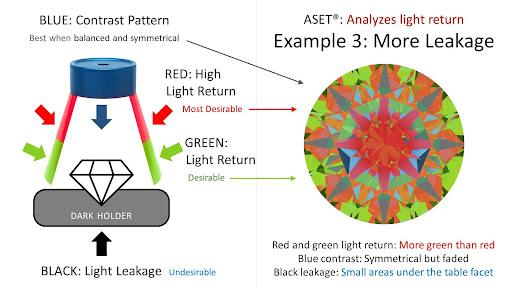
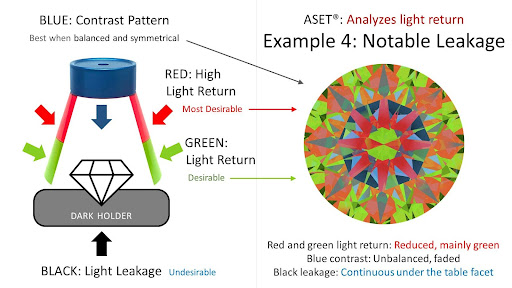
Why Optical Symmetry Analysis is Important
Arguably, optical symmetry analysis is not essential. The vast majority of diamonds are produced without regard for fine-tuning the facets so that the internal facet reflections overlap perfectly with their opposites.
The nuanced answer: When combined with strong light return and sharp, balanced contrast, diamonds with the highest level of reflective optical symmetry can produce more intense scintillation and more visible fire, due to larger internal compound mirrors. Diamonds with truly superior optical symmetry are not casually or accidentally made.
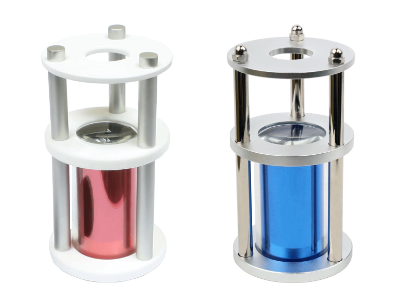
Hearts & Arrows Diamond Imaging Examples
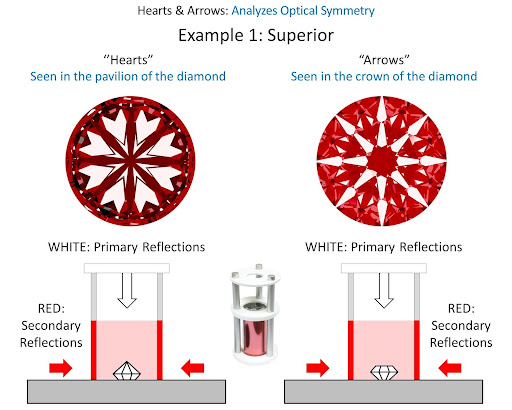
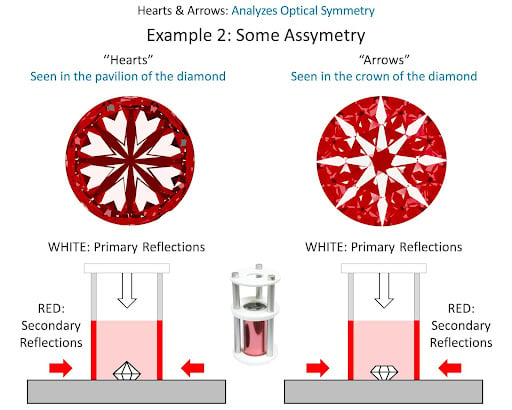
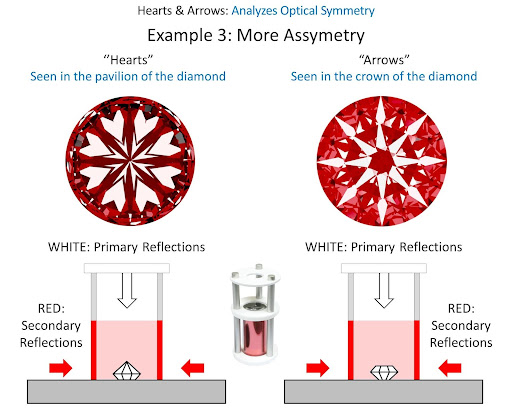
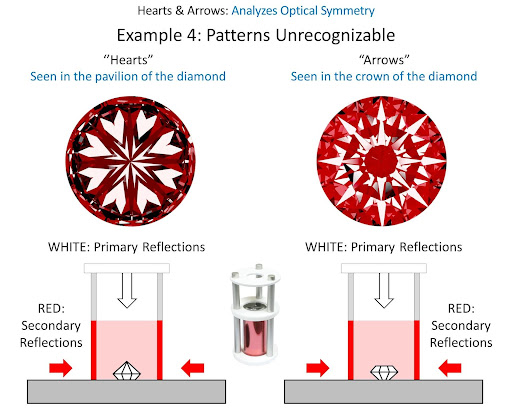
Warning: Computer Generated Images (CGI)
Photographs versus CGI
Some sellers provide light performance proof by taking real photographs, made in various SLEs. This is highly desirable, as long as the environment is set up properly, because it permits extremely detailed analysis.
When photography is not practical, various software programs can produce CGI of diamonds in various SLEs. This can be useful – or misleading – depending on how those images are produced.
Whiteflash, Blue Nile and James Allen offer extensive inventories of quality diamonds, complete with high-res imaging and videos and diamond certificates. In addition to their transparent business practices, their commitment to consumer education is outstanding.
CGI: Manual entry vs Actual 3D scan
CGI can be produced in a variety of ways. How useful or accurate those images are depends on whether they were generated from manual entry of facet-group averages, or generated from an actual mechanical scanner which measured the diamond in 3D. See screen shots from DiamCalc software here.
PriceScope Pointer: Whether intentional or by accident, some diamond sellers provide Ideal Scope, ASET and Hearts and Arrows simulations from manual input CGI. Those images do not represent the subject diamond and give a false positive impression. Be sure a mechanical 3D scan was used.
You might also ask the seller to send you the 3D scan. Common file formats are .SRN .STL .DMC .ASC and DXF./span.
Hearts and Arrows CGI: Manual entry vs Actual 3D scan Examples
CGI of Hearts & Arrows becomes egregiously misleading if manual entry is used instead of an actual 3D scan – because the computer assumes the diamond has a perfect wireframe, which is practically impossible when cutting diamonds, even for the most skilled hearts & arrows cutters.
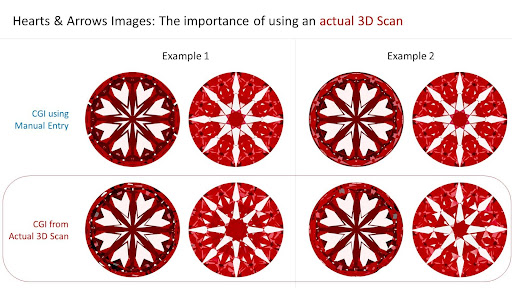
Several of PriceScope’s vetted vendors carry exquisite and exclusive Hearts and Arrows diamonds. Discover these special collections, Whiteflash A CUT ABOVE® and James Allen True Hearts™, which are true diamond extraordinaires.
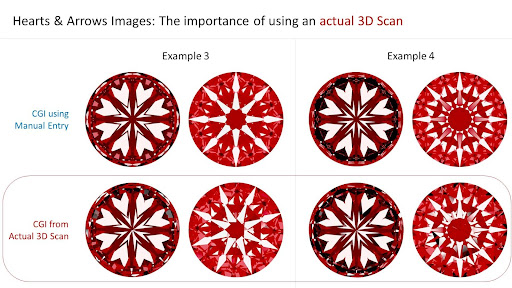
Ideal-Scope and ASET CGI: Manual entry vs Actual 3D scan Examples
While less egregious than Hearts & Arrows CGI, due to a less nuanced level of analysis, manual entry artificially improves light return details, potentially hiding or reducing the actual presence of light leakage.
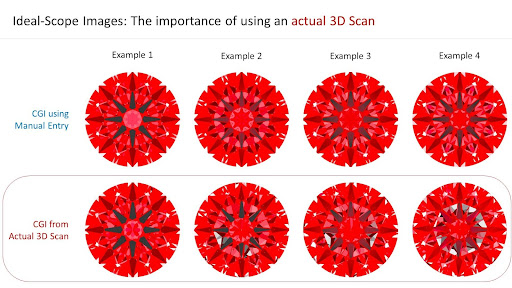
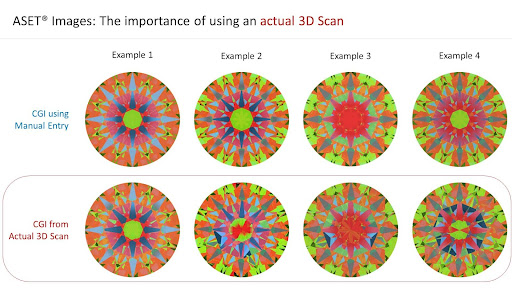
Get fast answers to any question: Ask our community of unbiased independent helpers.
SEARCH FOR YOUR PERFECT DIAMOND